Page 1 of 1: QuickTime (.mov) to .avi Conversion Guide using QuickTime Pro 7
Software you will need:
In this guide I used a QuickTime HD trailer from http://www.drfoster.f2s.com/, so if you wish, you can download a trailer from there and try the steps below for yourself.
Open up your .mov file in QuickTime 7. Click "File" at the top, then click "Export". (Screen Shot Below)
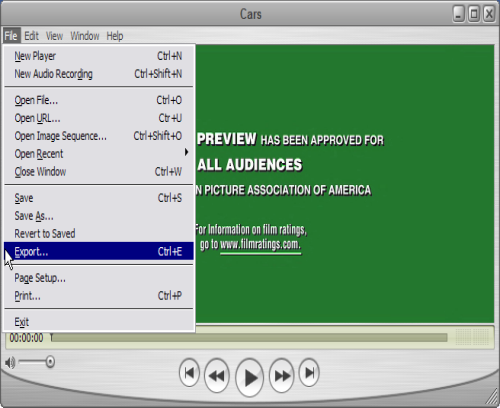
Then click the down arrow to the right of the Export box and select "Movie to AVI". Then click the "Options" button on the right. (Screen Shot Below)
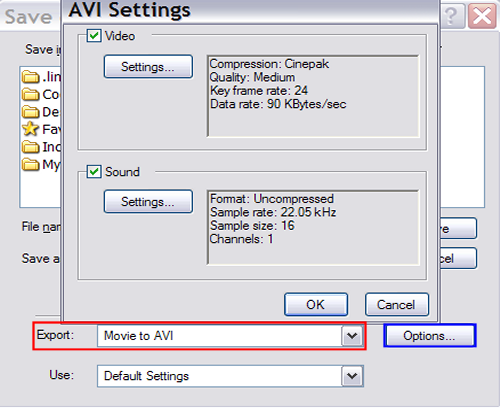
Then click the "Settings" button under the "Video" section to select the codec that you want to use for the compression. There is not alot of options to choose from, I use "Indeo" at the best quality, although "Cinepack" may work as well
(uncompressed should be the best, but it produces AVI files that are too large, especially the HD ones). Also uncheck the box that says "Limit data rate to". After that click the OK button. (Screen Shot Below)
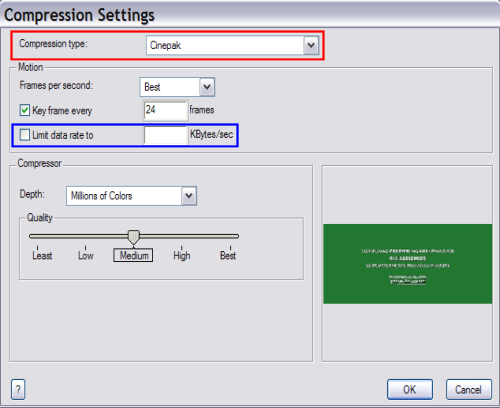
Now we are going to modify the "Audio" settings the same way we did the "Video" settings. Go ahead and click the "Settings" button under sound. (It is a good idea to check before hand the actual rate of the orginial audio and select the rate that matches the orginial to aviod having sound sync issues.) Set it to 48 kHz and 16 bit stereo for the best audio settings. After that click the OK button. (Screen Shot Below)
How to check the audio rate etc. Click "Windows", then click "Show Movie Info": (Screen Shot Below)
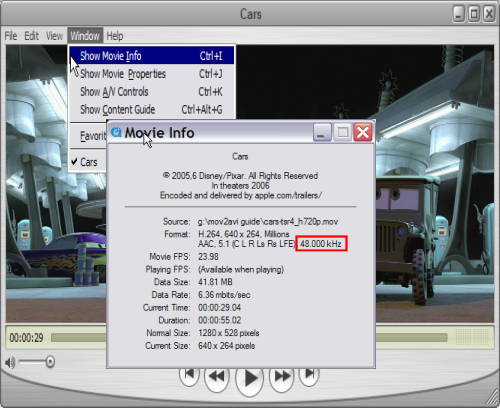
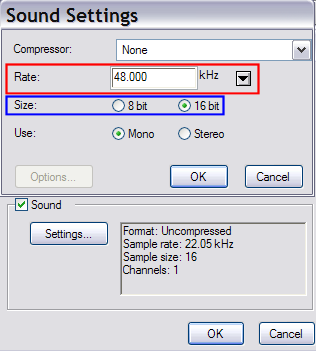
Now just keep clicking OK until you get back to the "Save exported file as" window, and find a place on your hard drive with enough free space and click save. Your done, just wait for it to finish. (Screen Shot Below)

Once the processing has finished, you have just managed to successfully convert your QuickTime .mov file to AVI. The AVI file that you now have will be using Cinepack or Indeo video compression, with uncompressed audio. To make the AVI smaller, you can try converting the AVI to DivX/XviD format with MP3 audio, and instructions on how to do this can be found in this guide:
http://www.divx-digest.com/articles/autogk.html#step1
In this guide I used a QuickTime HD trailer from http://www.drfoster.f2s.com/, so if you wish, you can download a trailer from there and try the steps below for yourself.
Open up your .mov file in QuickTime 7. Click "File" at the top, then click "Export". (Screen Shot Below)

Then click the down arrow to the right of the Export box and select "Movie to AVI". Then click the "Options" button on the right. (Screen Shot Below)

Then click the "Settings" button under the "Video" section to select the codec that you want to use for the compression. There is not alot of options to choose from, I use "Indeo" at the best quality, although "Cinepack" may work as well
(uncompressed should be the best, but it produces AVI files that are too large, especially the HD ones). Also uncheck the box that says "Limit data rate to". After that click the OK button. (Screen Shot Below)

Now we are going to modify the "Audio" settings the same way we did the "Video" settings. Go ahead and click the "Settings" button under sound. (It is a good idea to check before hand the actual rate of the orginial audio and select the rate that matches the orginial to aviod having sound sync issues.) Set it to 48 kHz and 16 bit stereo for the best audio settings. After that click the OK button. (Screen Shot Below)
How to check the audio rate etc. Click "Windows", then click "Show Movie Info": (Screen Shot Below)


Now just keep clicking OK until you get back to the "Save exported file as" window, and find a place on your hard drive with enough free space and click save. Your done, just wait for it to finish. (Screen Shot Below)

Once the processing has finished, you have just managed to successfully convert your QuickTime .mov file to AVI. The AVI file that you now have will be using Cinepack or Indeo video compression, with uncompressed audio. To make the AVI smaller, you can try converting the AVI to DivX/XviD format with MP3 audio, and instructions on how to do this can be found in this guide:
http://www.divx-digest.com/articles/autogk.html#step1




